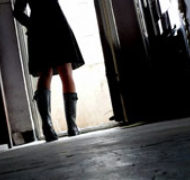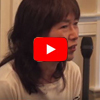Good Work: Born Inside or Out?
Blog / Produced by The High Calling
I walked into the classroom. No books on the shelves. Linoleum floor, cracked. No area rugs. Crayons, paper, glue, scissors, blocks? Nope. Well, at least there were desks and a blackboard.
The principal was cheery when I asked about curriculum. “This!” she said, sweeping her arm towards the window and the river beyond. Then she smiled like she’d given me the biggest gift an administrator could give a new teacher who would welcome 30 kids to an empty classroom in just a few short days.
Looking outside, the river seemed far off. Our view was enviable, in its way, but we wouldn’t be skipping down to the water anytime soon. For all intents and purposes, the river was not going to replace my need for pencils and math books.
That year was one of the worst years I spent, in any profession. The school’s philosophy was that children are endlessly creative and could make the curriculum, direct their learning. Everything depended on what was inside the kids. But each day felt like a monumental struggle, as the gaping external environment sat waiting for us to magically fill it with creative products and responses.
Six years later, I entered a different classroom—not as the teacher, but as a parent. Books lined shelves. Bright red paper apples were strung along walls, inscribed with children’s names in black marker. Plastic stackable containers held math manipulatives, blocks, paints, scissors, and paper. Children sat in neat circles around oblong tables. Before each child was a sheet of paper with the letter “l” in bold, followed by blank lines. It was the end of the year, the alphabet taught long ago. But kids were carefully copying the letter and raising their hands to wait for the teacher to check their work.
Here, it didn’t seem to matter what was inside the kids. Their external environment—the room—was filled with colorful things and teacher-directed products and responses. It was quiet and orderly and, suddenly, terribly stifling. I couldn’t wait to leave.
Two rooms. One where everything depended on what was inside the kids, and the other where everything seemed focused on what was outside the kids.
Where was the room that saw the necessity for both-where inside and out were purposely, inextricably linked?
This is not just a classroom question. It is an artistic and a work question.
One of my current roles is to help people write poetry. I begin with them where they are, and that’s exciting. Some fledgling poets come with image stacked upon image and form upon form (usually a kind of rhyme scheme). These poets rely on externals. Indeed, they are not so far off – except perhaps in particular points of skill – from certain published poets whose work does everything “right” but lacks an emotional center.
Other poets come bursting with emotion, spilled verse after verse in abstract language. I know the poets are sad or happy or confused or in love, because they tell me in so many words. However, if I were to line their poems up on the apple wall you might not discern the difference, except that each is stenciled with a distinct name.
Before I go any further, let me be very clear. This is not a criticism of beginning poets. I absolutely love the enthusiasm, efforts and warmth, the beautiful relationships I form with people who offer their words to me. Furthermore, I struggle with the same issues, especially when I’m trying to write poetry that is a first-try at a fresh life theme.
So you’ll believe me, let me share a poem I composed as part of an endeavor to write about my childhood loss—of three homes to fire. Losing three homes in any fashion is hard; losing them to fire is a deeply emotional reality. This was my first try at putting it into poetry:
After the Fire
Come with me to chicory
laced foundation, gutted,
where sit the stones,
burned and blackened,
like memories obscure
they stole away. I will take
your hand, lead you up
the thistled hill at back, where
stood three lilacs purpling
in rising mist. We can lean
and lift, cart soot-dust rocks
to nearby field, let greening
timothy lick them clean in
rain and wind. I will search
for new pine, iron nails, glass
to set in place. Such trifles
will not raise lost reveries
to life, but they can trace
my love, erect as grace.
While nice things are beginning to happen structurally—things having to do with momentum and subtleties in rhyme (blackened and back, greening and clean), the poem is not there yet. My favorite lines are I will search/for new pine, iron nails, glass/to set in place. I also like the lilacs purpling, as well as the thistles, chicory, and timothy.
What’s happening here? Most likely, I’m still lacking on two points: inside and out. What is inside me regarding the fire losses is buried too deep and perhaps afraid to assert itself more clearly with emotional power, much like the children tentatively raising their hands in that orderly, predictable classroom. So I’ve relied on abstract language (e.g., love and grace) to attempt an emotional expression. Unfortunately, the externals I bring to the poem do not make up for the emotional lack. The blackened stones could be in anybody’s poem. They are as undefined as the empty classroom that overlooked the river from a great distance. How could they elicit a deep emotional response in me, or you?
My troubles in writing on this childhood theme will only be addressed with a two-fold solution: attend to both inside and out, through time and repeated attempts. Someday I hope to come back with a fire poem that will take a person’s breath away. But before I do, I’m going to have to feel more and sense more. Maybe I will need to visit a burned building or spend time free-writing to unearth the finer details of my lost homes and how I feel about their disappearance.
In any case, are the troubles I’m experiencing confined to the poet? I don’t think so. It’s my belief that managers, strategists, classroom teachers, and many other professionals whose work lacks power might try a similar approach: cultivate both inside and out, then let the two ignite, embrace.
This article is a modified reprint, courtesy of Curator Magazine, by L.L. Barkat, High Calling managing editor and author of Rumors of Water: Thoughts on Creativity & Writing. Curator Magazine, a publication of the International Arts Movement, announces the signs of a “world that ought to be” as we find it in our midst, and seeks to inspire people to engage deeply with culture that enriches life and broadens experience.
Image by Rachel Titiriga. Used with permission. Sourced via Flickr.
“Most of the material on The High Calling is available for reuse under a Creative Commons 3.0 license. Unfortunately, work by Laura Barkat is not available for reuse. If you are interested in reprinting work by Laura Barkat, please contact her directly.”





